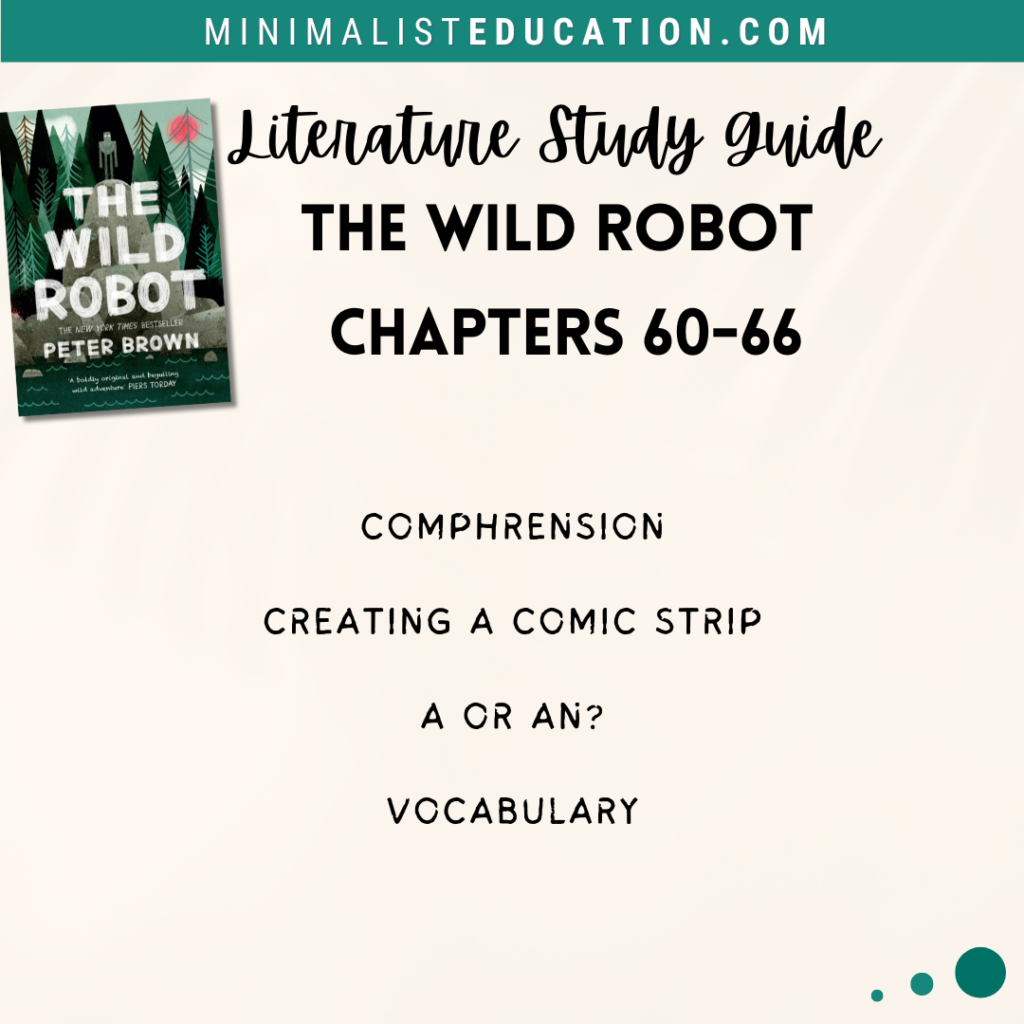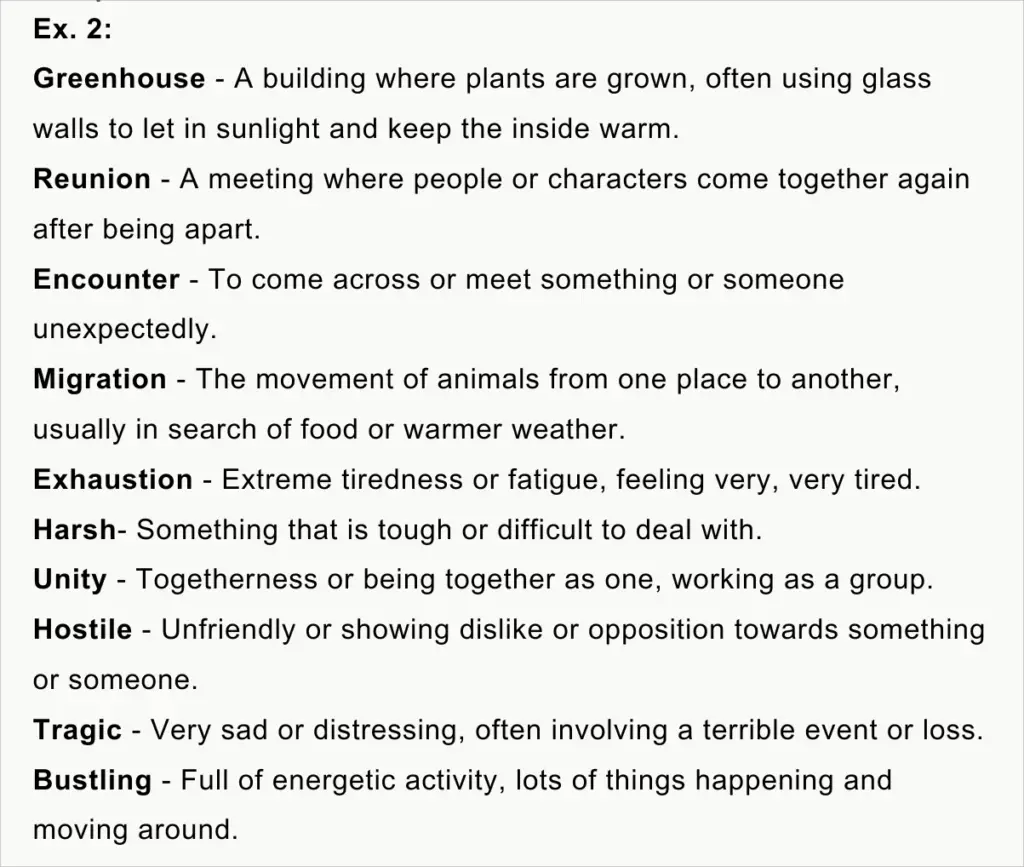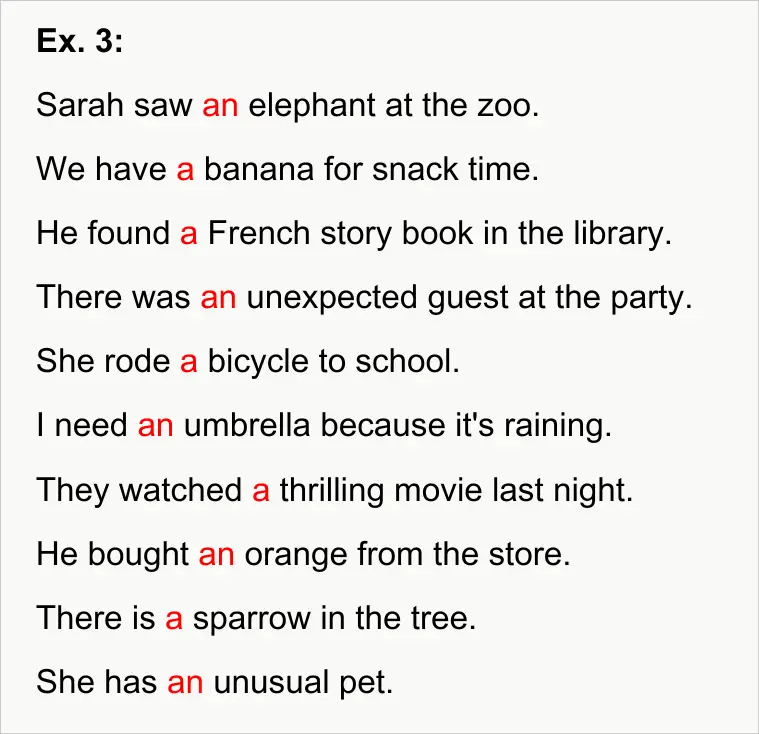Story to Comic Strip: The Wild Robot Chapters 60-66 Study Guide

This week, in The Wild Robot study guide, kids are going to have a blast turning Brightbill’s adventure into a comic strip. Also in this week’s guide: comprehension questions, building vocabulary, and when to use “an” and “a”.
Welcome to Week 11 of The Wild Robot Study Guide, Chapters 60 – 66. Let’s begin!
Access the rest of this study guide here.
In this post:
- The Wild Robot teaching notes and answers for Week 11 Chapters 60-66.
- Download The Wild Robot Study Guide for Week 11 Chapters 60-66.
The Wild Robot Chapters 60-66 Study Guide Teaching Notes And Answers
Chapter 60:
- Ex. 1 Answer the comprehension questions based on chapters 60. These can be discussed first before writing.
In Chapter 60, Roz comes to the rescue when Paddler gets his tail caught by Rockmouth. This is a really sweet chapter as we find out more about the grumpy old pike. We get an insight into why he’s been so mean, however, we only get find this out due to Roz deciding to take some time out to find out more about him.
This chapter provides a valuable lesson for us about misunderstanding and judging others. Due to Roz’s empathy for Rockmouth, children get to understand the importance of considering others’ perspectives.

Chapter 61-66: Creating a Comic Strip!
- Read chapters 61-66 of The Wild Robot.
- Ex. 1 Use the Comic Strip Template to create a comic strip about Brightbill’s adventure in Chapter 63.
Brightbill comes back! I really wanted the kids to get a chance to spend some quality time creating a comic strip depicting Brightbill’s adventures during his migration, so I have kept this week’s activities quite light.
Creating comic strips based on story chapters is a fantastic activity for children as they have to break down the events and key moments in the chapters into visual and textual representations. This activity draws on multiple skills; comprehension and creativity being at the forefront.
If your child hasn’t come across the format of comics, have a look at some before hand and notice the features that characterise this genre.
Features of a Comic Strip
Features of a Comic Strip to notice and include are that the story is mainly depicted through the pictures in panels, and the use of speech bubbles or thought bubbles, and actions words.
Speech bubbles are used to show what the character is thinking or speaking out loud.
Action words are used to show sounds that are heard in a comic strip. These usually have a jagged or thicker outline and the text used inside is in capital letters and bold.
Steps to Creating The Comic Strip
The best way to start would be with the text. For each panel in the comic strip, write all of the text first. Write a small caption, draw in the speech bubbles around any dialogue and boxes around any action words. Remind your child to leave plenty of room for their artwork.
Once the captions and dialogues are written, get them to begin drawing with a pencil first, and once they’re happy, they can use colouring pencils or felt tips to make their comic pop!
Vocabulary Focus
- Ex. 2 Match the vocabulary words with the correct definition. Choose 5 words from the list and write sentences with them.

Grammar Focus: A or An?
- Read the explanation notes on when to use ‘a’ or ‘an’
- Ex. 3 Complete each sentence with either “a” or “an” based on whether the following word begins with a consonant or a vowel sound.
Has anyone else noticed that usually when speaking kids get the “a” and “an” usage correct but when writing it goes out of the window?
The rule is very straight forward… in most cases. The rule for using “a” or “an” is based on the sound of the first letter of the word that follows it:
Use “an” before words that sound like they begin with a vowel sound (a, e, i, o, u).
Use “a” before words that sound like they begin with consonant sounds.
I say in most cases… when is anything in English spelling and grammar ever just straight forward!
Notice how I said to use an before words that sound like they begin with a vowel and how I said to use a before words that sound like they begin with a consonant.
So for the word hour, which doesn’t actually begin with a vowel, you would say “an hour” as the word is pronounced as if it starts with a vowel.
For the word university, which does start with a vowel, you would say “a university” as the word is pronounced as if it starts with a consonant (y).
It’s up to you if you want to explain this in detail to your child, however, for practice I’ve used just words that begin with a vowel and sound like it too!

Download Your Copy of The Wild Robot Study Guide for Chapters 60-61:
I hope this helps some of you out!
Leave a Reply